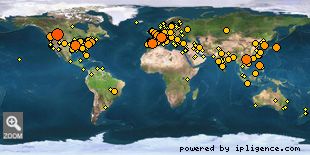 » NMR Jobs
» NMR Jobs |
|
|
|
|
|
|
 » Cool papers
» Cool papers |
|
|
|
|
|
|
 » NMR books
» NMR books |
|
|
|
|
|
|
 » NMR theses
» NMR theses |
|
|
|
|
|
|
 » NMR blogs
» NMR blogs |
|
|
|
|
|
|
 » NMR news
» NMR news |
|
|
|
|
|
|
 » NMR tweets
» NMR tweets |
|
|
|
|
|
|
 » NMR videos
» NMR videos |
|
|
|
|
|
|
 » NMR pictures
» NMR pictures |
|
|
|
|
|
|
 » Online Users: 332
» Online Users: 332 |
| 0 members and 332 guests |
| No Members online |
| Most users ever online was 1,278, 01-09-2024 at 07:38 AM. |
|
 » Welcome!
» Welcome! |
Welcome, NMR world!

Our visitors map.
|

 [NMR paper] Digital quantum simulation of NMR experiments [NMR paper] Digital quantum simulation of NMR experiments |
|
Nov 18, 2023 - 3:38 AM - by nmrlearner
|
 Digital quantum simulation of NMR experiments
Digital quantum simulation of NMR experiments
Simulations of nuclear magnetic resonance (NMR) experiments can be an important tool for extracting information about molecular structure and optimizing experimental protocols but are often intractable on classical computers for large molecules such as proteins and for protocols such as zero-field NMR. We demonstrate the first quantum simulation of an NMR spectrum, computing the zero-field spectrum of the methyl group of acetonitrile using four qubits of a trapped-ion quantum computer. We reduce...
More...
|

 0 Replies | 246 Views
0 Replies | 246 Views
|
|
 » BioNMR wiki
» BioNMR wiki |
|
|
|
|
|
|
 » NMR discussion
» NMR discussion |
|
|
|
|
|
|
 » NMR conferences
» NMR conferences |
|
|
|
|
|
|
 » NMR software
» NMR software |
|
|
|
|
|
|
 » Pulse sequences
» Pulse sequences |
|
|
|
|
|
|
 » NMR community
» NMR community |
|
|
|
|
|
|
 » NMR presentations
» NMR presentations |
|
|
 » NMR web resources
» NMR web resources |
|
|
|
|
|
|
 » NMR feature requests
» NMR feature requests |
|
|
 » NMR bookmarks
» NMR bookmarks |
|
|
|
|
|
|
 » Stats
» Stats |
Members: 3,202
Threads: 25,847
Posts: 26,233
Top Poster: nmrlearner (23,291)
|
| Welcome to our newest member, bpadmanabhan |
|



